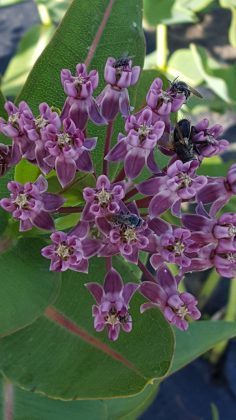Sign up for Our Newsletter
Signup for our newsletter to get notified
about sales and new products.
We are always updating inventory, if the product you want is listed as out of stock please contact us. Dismiss
Skip to content
Signup for our newsletter to get notified
about sales and new products.
$14.00 – $398.00
This mix contains species which typically reach a mature height of 3 feet or less. With blooms from early spring to late fall, this mix provides habitat for pollinators all year round.
The seeding rate for this mix is 180 seeds per square foot. This helps to insure good establishment in the first year for landscaped areas. If you are seeding more than 1/2 acre you may prefer a more budget friendly version of this mix with 40 to 80 seeds per square foot. Please contact us and we can help you with your needs.
| Weight | N/A |
|---|---|
| Dimensions | N/A |
| Size / Amount | 250 SQ FT, 500 SQ FT, 1000 SQ FT, 1/8 Acre (5400 SQ FT), 1/4 ACRE (11000 SQ FT), 1/2 ACRE (22000 SQ FT), 1 ACRE (43,500 SQ FT) |
| Light | |
| Moisture |
Components may change slightly from year to year with species availability. If there is high demand, quantities of some species may be limited so that we would have to substitute. Please feel free to reach out if there are species that you are concerned about. info@prairielegacyinc.com
| Wildflowers | Weight % |
|---|---|
| yarrow | 1.58 |
| candle anemone | 0.25 |
| columbine | 0.25 |
| butterfly milkweed | 0.50 |
| ground-plum | 0.19 |
| false boneset | 3.15 |
| purple poppymallow | 0.38 |
| New Jersey tea | 0.13 |
| showy partridge-pea | 4.10 |
| plains coreopsis | 2.21 |
| easter white prairie-clover | 0.63 |
| purple prairie-clover | 1.89 |
| tall cinquefoil | 0.50 |
| pale purple coneflower | 0.32 |
| dotted gayfeather | 0.25 |
| Lemon beebalm | 0.50 |
| beardtongue | 0.06 |
| shell-leaf penstemon | 0.50 |
| self-heal | 1.26 |
| Virginia mountain mint | 0.25 |
| upright prairie-coneflower | 3.15 |
| black-eyed Susan | 1.26 |
| Prairie Petunia | 6.31 |
| Stiff goldenrod | 0.32 |
| showy-wand goldenrod | 0.38 |
| heath aster | 0.13 |
| silky aster | 0.32 |
| golden alexander | 0.50 |
| Total | 31.27% |
| Grasses | Weight |
|---|---|
| Little Bluestem (Schizachyrium scoparium) | 37.82% |
| Sideoats Grama (Bouteloua curtipendula) | 22.07% |
| Blue Grama (Bouteloua gracilis) | 2.84% |
| Short beak sedge (Carex brevior) | 1.89% |
| Tall dropseed (Sporobolus compositus) | 1.26% |
| Purple Lovegrass (Eragrostis spectabilis) | 0.63% |
| Junegrass (Koeleria macrantha) | 0.35% |
| Total | 68.7% |
Planting instructions for Small Spaces
With a little patience, starting a Prairie Garden can be a rewarding process. Transforming a site into a colorful space for biological activity and discovering new species as the seasons progress can be a delightful experience.
Preparation
The more time you can spend on preparation, the more successful the planting. The goal is to reduce as many weeds and weed seeds as possible. You can accomplish this by nonselective herbicide applications, tilling, smothering, or solarization. In a lawn area, you can simply remove the sod, put on a little top soil or compost and till it in. If you use smothering, herbicide, or solarization, you will also want to till the area to allow good seed to soil contact.
Planting
You may sow your seed in spring or fall. Do not attempt to sow seed in the summer as it is more likely to die of heat and desiccation in our summer weather. Fall seeding allows perennial seeds to break dormancy over the winter months. While some species may produce flowers the first year, you may prefer to keep this new planting mowed to 4 to 6 inches in the first year to prevent weed seed from moving in. Pulling weeds may dislodge the plants you want to keep, so mowing is a better option. Many more plants will come up in the second year and may crowd out many of the weeds. If desired another mowing or two in the second year can be tolerated to keep weeds down.
Sowing the seed
Place a small amount of sand, vermiculite, rice hulls, or other filler in a bucket. Dump in your seed and additional filler and mix well with your hands. Save half of this mixture in another bucket. Using one half of the mixture, spread the seed by hand or with a hand crank grass seeder over your entire prepared seed bed. Then repeat with the second half of the seed. By spreading half at a time, you will be sure not to run out of seed before you have covered the entire area.
Click here to download Prairie Pronto Mix Planting instructions
Seed Mixes
Seed Mixes
Reviews
There are no reviews yet.